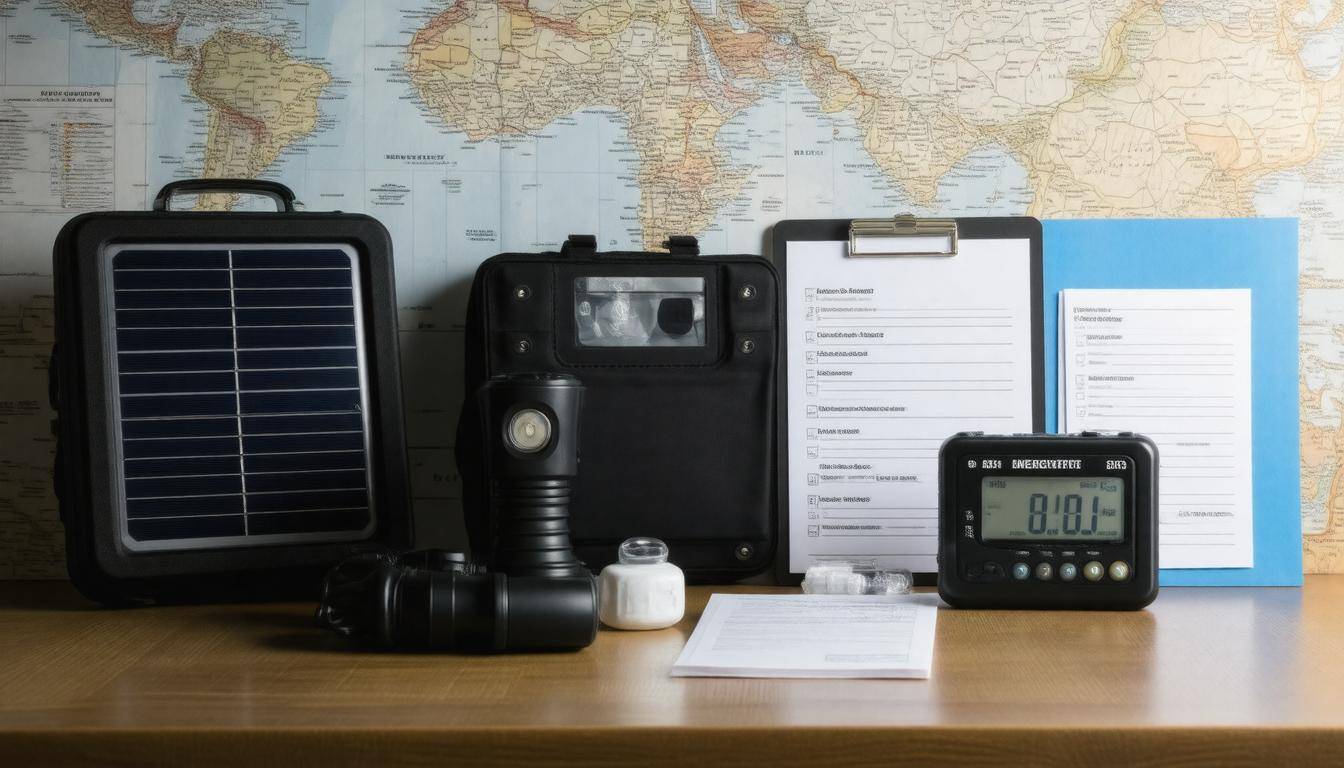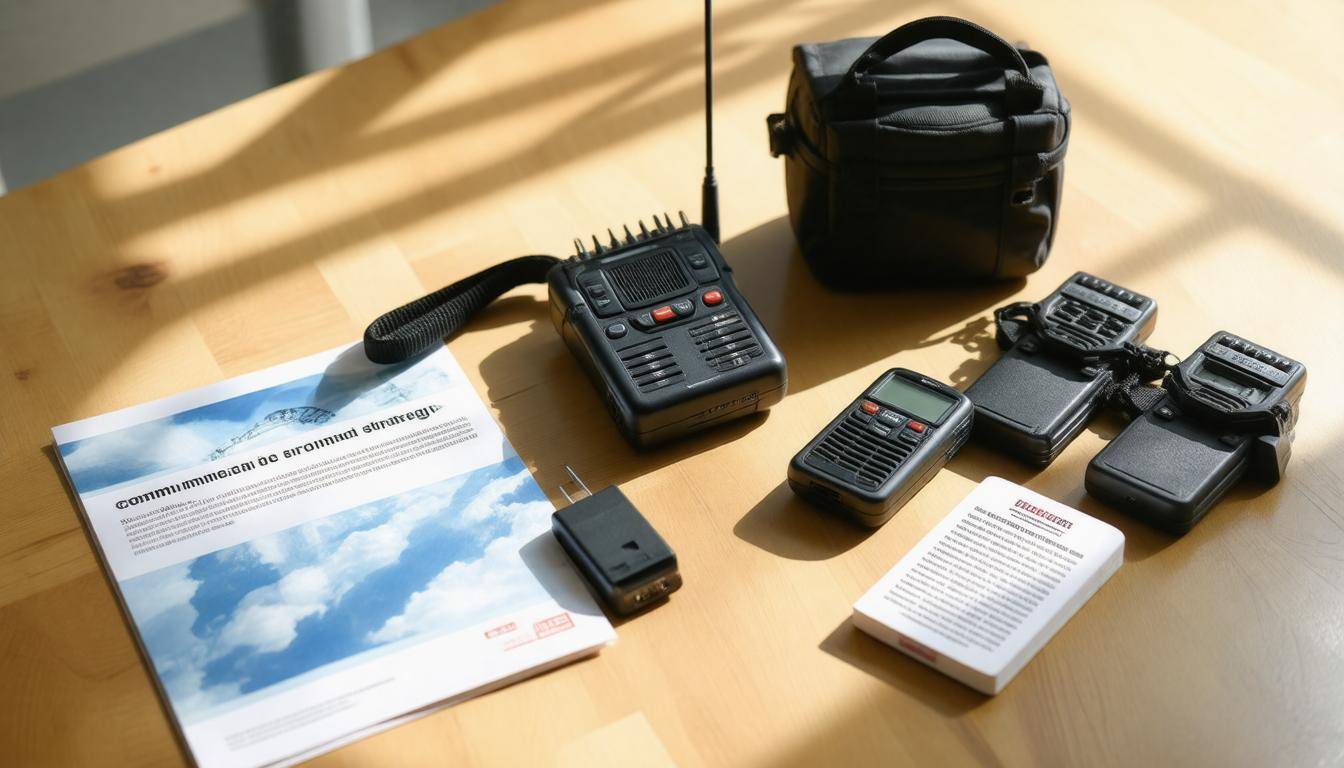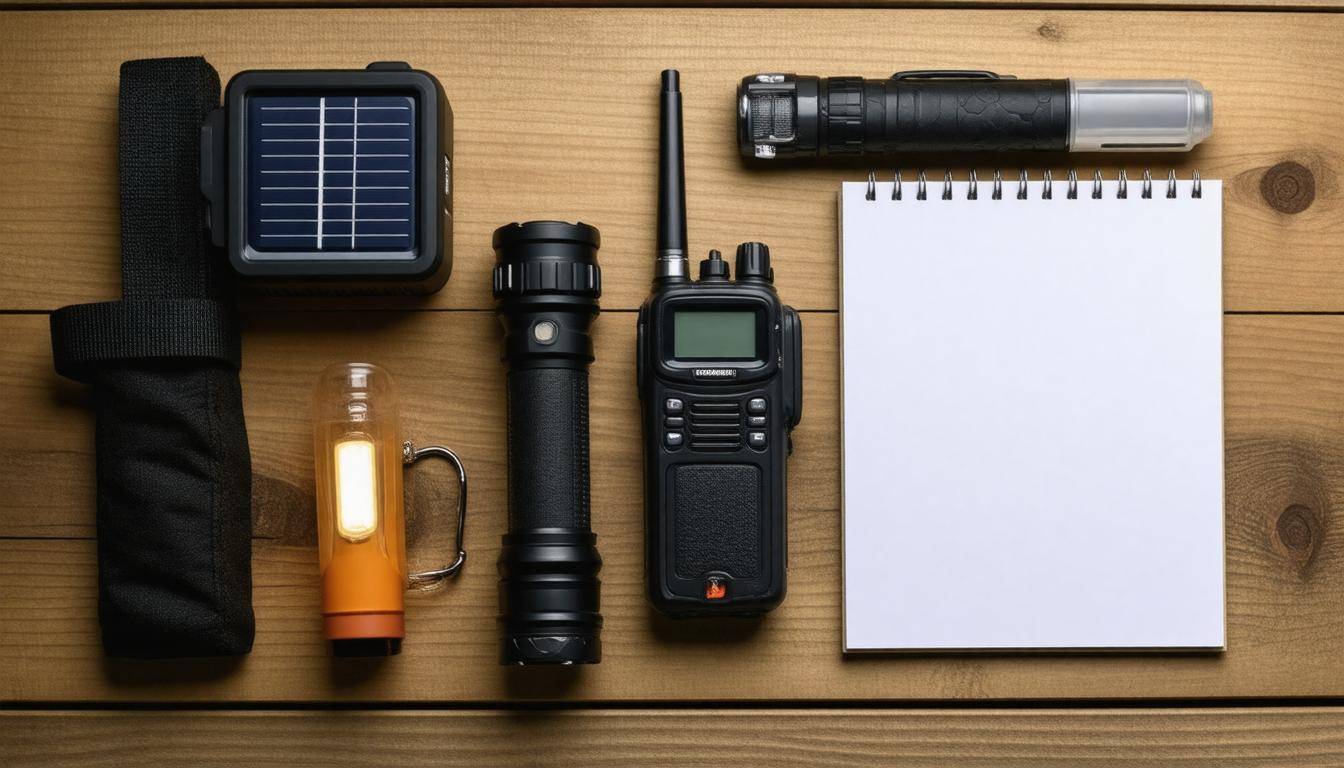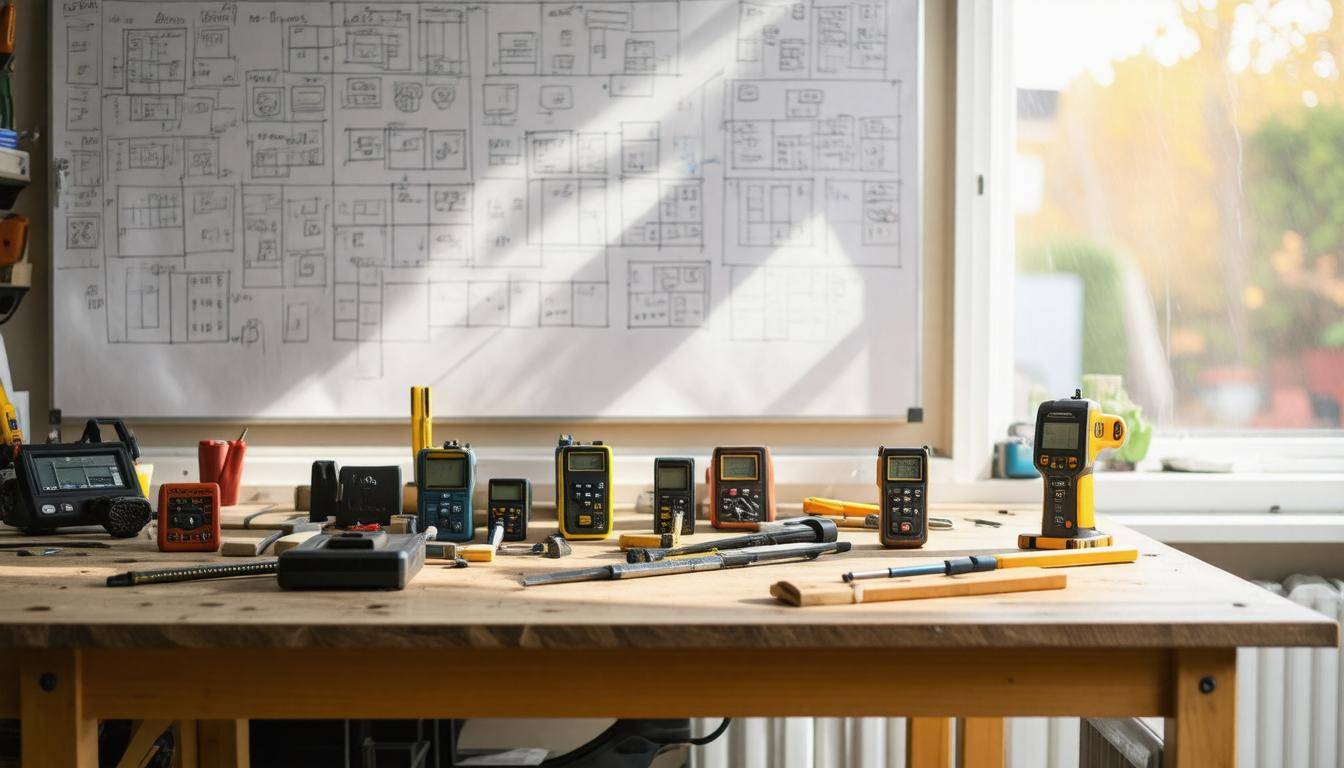In times of crisis, every second counts, and staying connected can play a vital role in ensuring safety and proper response. But what happens when conventional communication methods fail? Enter budget emergency communication—a smart solution for anyone who wants to be prepared without breaking the bank. Whether you’re an outdoor adventurer or simply looking to bolster your family’s safety plan, knowing which affordable tools and resources are available can make all the difference. In this guide, we’ll explore practical strategies and devices that won’t strain your wallet while keeping you linked to the world, no matter the situation. Let’s dive into what you need to know for effective and budget-friendly emergency communication.
The Complete Guide to Budget Emergency Communication covers essential tools and techniques for managing finances effectively during a crisis, including personalized budgeting strategies, recommended apps, and financial education resources. It also emphasizes the importance of regularly assessing spending habits and setting aside an emergency fund to ensure financial stability in unforeseen situations.

Top Budget-Friendly Emergency Devices
One of the standout options in this category is the Garmin inReach Messenger Plus, weighing in at a mere 4.1 oz. This device packs a punch with features like photo sharing and seamless messaging across various platforms.
For about $350, it brings the power of satellite messaging into your hands, especially useful when you’re venturing off the grid. Its impressive battery life of up to 25 days means you can stay connected during extended trips without the constant worry of recharging. The drawback? It’s a bit on the pricier side compared to other budget offerings and has a limited screen size which may impact usability when composing messages.
While the Garmin inReach Messenger Plus is a great choice for those willing to invest a bit more, there’s also the Garmin inReach Messenger, which is slightly lighter at 4.0 oz and offers exceptional battery life of up to 28 days for approximately $300. This version maintains many of the same functions but comes at a lower price point, making it an excellent option for those looking for value without sacrificing reliability. Although it’s not the most compact option available, its affordability and performance make it a solid contender among budget-friendly devices.
If compactness is a priority for you, look no further than the ACR Bivy Stick. Weighing only 3.6 oz, this device boasts a remarkable battery life of up to 120 hours, allowing you to remain connected even in prolonged emergencies. Priced at around $150, it offers global coverage and flexible activation options which can suit various user needs. However, its limited on-device functionality may leave some users wanting more interaction capabilities.
Alternatively, another interesting product is the Ocean Signal rescueME PLB1. At just 4.0 oz and priced similarly around $280, it focuses primarily on safety with reliable dual-frequency SOS transmissions that alert rescue services quickly without incurring any annual fees. The major limitation here is its lack of two-way messaging capabilities; therefore, it’s most effective as a last-resort communication device rather than for regular updates.
For those who prefer something robust with longer communication opportunities, consider the SPOT X device. While it weighs more at 6.8 oz, its battery life stretches impressively to an astonishing 240 hours – perfect for long expeditions where charging options might be limited. Retailing around $250, it includes two-way messaging paired with a built-in keyboard which enhances user experience significantly by allowing more detailed communication than many models offer. Nevertheless, some users find its bulkiness less appealing when prioritizing portability.
As you evaluate these different devices, remember that factors such as cost-effective ownership and ease of use are equally crucial components in your decision-making process.
Think about how often you’ll realistically use these devices and assess their respective costs over time; some models may seem affordable initially but could require higher ongoing costs depending on your usage patterns. The ACR Bivy Stick stands out here due to its low five-year cost if activated only once per year—a critical consideration if budget constraints are significant for you.
Choosing the right emergency device hinges not just on initial investment but also on weighing attributes like signal coverage and ease of use during high-pressure situations. As many outdoor enthusiasts continuously seek dependable connectivity options that remain financially viable in the long term, their preferences can guide you toward making informed decisions regarding essential communication tools.
With these considerations in mind, let’s take a closer look at options that prioritize affordability while ensuring robust communication capabilities.
Affordable Radios and Phones
When it comes to emergency situations, having access to communication is vital. Luckily, there are budget-friendly radios that won’t break the bank while keeping you informed. For instance, the Midland WR120 NOAA Weather Alert Radio is a fantastic option priced around just $30. This device delivers crucial weather alerts directly from NOAA, allowing you to stay updated on severe weather in your area. Its compact size and user-friendly interface make it ideal for home use and as part of an emergency kit.
Budget-Friendly Phones
But radios aren’t the only affordable communication options—you’ll want to consider mobile phones too.
Prepaid mobile phones can provide a cost-effective solution for emergencies without the burden of expensive contracts. A perfect example is the Tracfone TCL A3, which costs around $40. This straightforward phone allows you to store essential contacts and can be activated solely for crisis situations when needed. Many of these prepaid plans offer minimal monthly costs that help keep your budget intact while ensuring communication access should the need arise.
Another excellent option is older smartphone models like the iPhone SE, often found used or refurbished for about $100. This provides standard calling features and allows you to download useful apps that can assist during emergencies—think weather apps or location tracking services. Not only can you communicate efficiently, but you also access real-time information critical during a crisis.
More importantly, keeping one of these devices charged and ready ensures you’ll have a lifeline at your fingertips, especially when time is essential. Reliable communication tools enable better management of any emergency, connecting with loved ones and seeking help if necessary.
Equipping yourself with these affordable radios and mobile options enhances your preparedness while remaining easy on your wallet. As we look further into this topic, it’s crucial to think about how to create an effective strategy for using these tools during emergencies.
Building Your Communication Plan
A well-thought-out communication plan can be the difference between chaos and clarity during an emergency. It provides a roadmap for how you and your loved ones can stay in touch and coordinate your efforts when it matters most.
The first step is to identify key contacts—make a list of family members, friends, and local authorities who should be included. This list should contain names, phone numbers, and even email addresses. To ensure everyone has access to this information, consider printing several copies and placing them in easily accessible areas around your home, such as on the refrigerator or inside a family calendar.
Once you’ve identified your key contacts, the next crucial step is establishing meeting points.
Designing specific meeting locations is essential in case communication systems fail or if you’re separated during an event. These predetermined spots should be familiar to all family members—places like a local park, the front of your neighborhood grocery store, or even a friend’s house nearby. It’s important that everyone knows which place to go in the event of an emergency so that you can quickly regroup without wasting precious time trying to reach each other by phone.
Take time to discuss these locations at family meetings so that everyone feels confident about where to head.
Regular refinement of your plan ensures it remains relevant over time.
Just as technology changes, so do our circumstances and contact details. This brings us to the third step: regularly updating your plan. Set aside time every few months to review and revise your communication plan. Check if any phone numbers need updating, if new contacts need to be added, or if certain meeting points no longer suit your needs.
Additionally, practice makes perfect—conduct drills with your family so that everyone becomes familiar with what they need to do when under pressure. This will help reduce anxiety during actual emergencies, allowing you all to respond more effectively.
Incorporating these steps into a comprehensive communication plan not only prepares you for immediate crises but also instills a sense of confidence among all involved. When everyone knows what actions to take and where to go, the chaos of an emergency transforms into order and assuredness.
Remember, proactive preparation today can safeguard your emotional well-being tomorrow.
As we navigate the essentials needed for effective communication during crises, it’s crucial to look at the necessary items that should always be on hand to facilitate these plans.
Essential Items for Communication Kits
An effective emergency communication kit is like a lifeline during crises; it should encompass more than just communication tools. Think of it as your personal safety net, woven with various essential items that ensure reliability when you need it most.
First on the list are battery packs. These high-capacity USB power banks can be the difference between being unreachable and staying connected during an emergency, particularly when your primary device’s battery drains quickly under stress.
Following closely are solar chargers. Imagine you’re in a situation where electricity is unavailable. A solar charger allows you to harness the sun’s energy to keep your devices powered, which is critical for maintaining communication over extended periods. They are particularly advantageous during natural disasters where traditional power sources may fail for days or even weeks.
An important component of any kit includes instruction manuals for radios and phones. Having manuals handy can save precious time when you’re trying to communicate. If a device malfunctions or seems unfamiliar in a tense moment, easily accessible instructions simplify troubleshooting and setup.
Alongside electronics and manuals, consider including multi-tools. While commonly recognized for their utility in everyday tasks, in emergencies they serve as indispensable tools for repairs or adjustments to your equipment. A trusty multi-tool offers the versatility needed to ensure devices function correctly, ultimately prolonging their lifespan during stressful situations.
Why these items? Each piece serves a purpose that aligns with self-sufficiency during emergencies. Together, they form a robust kit that empowers you to maintain functional communication even when conventional methods fail.
Additionally, you may want to include other essentials such as basic first aid kits, flashlights with extra batteries, and portable phone chargers—all of which enhance the effectiveness of your communication strategies in emergencies while promoting peace of mind.
With each carefully selected item enhancing your ability to stay informed and reach out when needed, the focus now shifts to maximizing the capabilities of technology through automated tools and real-time updates.
Using Apps and Alerts
In our increasingly connected world, smartphones have transformed into vital tools during emergencies. They do more than simply facilitate calls and texts; they serve as lifelines through various apps and alert systems, providing rapid updates and actionable information when it’s needed most.
For example, one app that stands out is Zello, which operates like a traditional walkie-talkie. This push-to-talk application can be invaluable in emergencies, allowing people to communicate instantly without the need for cell service. It’s particularly useful in larger crowds or during evacuations where typically making phone calls can become chaotic.
Key Apps to Consider
Another essential application is the FEMA App. This official app from the Federal Emergency Management Agency delivers real-time alerts about natural disasters and potential threats tailored to your location. It not only keeps you informed but also provides crucial safety tips and information on how to prepare for disasters effectively.
Encompassing a myriad of functionalities, these apps ensure that support is just a tap away, turning your smartphone into a robust emergency communication tool.
As we navigate through these applications, it’s equally important to set up alerts effectively.
Setting Up Alerts
One incredibly effective strategy for staying informed is enabling Wireless Emergency Alerts (WEA) on your smartphone. These notifications reach you instantly regarding severe weather warnings, local emergencies, or AMBER alerts related to child abductions. Make sure to activate this feature in your phone’s settings; doing so allows you to focus on what matters when disaster strikes.
In addition to WEA, consider joining community alert systems offered by local governments or organizations. These systems often provide hyper-localized information specific to your area and can include neighborhood watch alerts, upcoming drills, or even updates from nearby fire departments about ongoing incidents.
Furthermore, understanding how to customize these alerts is key. Depending on the app or system you’re using, ensure you select the types of notifications that matter most to you. Would you prefer updates about only severe weather or want a complete range of alerts? Tailoring this can help prevent alert fatigue while ensuring you’re still informed about critical situations.
Utilizing apps alongside well-configured alert systems enhances your preparedness for any emergencies that may arise. With this foundation laid, we can now explore methods that prioritize dependable and mobile communication options.
Reliable and Portable Communication Strategies

When it comes to emergency communication, reliable tools can make all the difference during stressful situations. You want devices that not only fit easily in your bag but also have the capacity to keep you connected when traditional networks fail. This is where creativity meets practicality; you can harness technology designed specifically for crises to ensure that you stay informed and safe when it matters most.
An example of this is the GoTenna Mesh system that can connect with other users via low-frequency signals. Though about $150 for a pair, they’re invaluable in situations sans cellular service. They create a mesh network, allowing users to communicate over several miles without relying on cell towers, truly empowering communities during emergencies.
Another solid option is handheld HAM radios, such as the Yaesu FT-60R, priced approximately at $150. These compact devices support various frequencies, making them versatile for different circumstances. One advantage of HAM radios is the ability to tap into local emergency frequencies, granting access to real-time updates from rescue teams or local authorities. However, getting licensed may be necessary, which often opens up a community of knowledgeable operators willing to help.
Yet, portability isn’t just about weight and size; it’s also about battery life and versatility in design.
When choosing a communication tool, consider those that offer long battery life, ideally 24 hours or more on standby. You’ll want devices that are rugged and can withstand rough weather conditions—after all, nature doesn’t wait for us to be prepared. The importance of durability cannot be overstated: whether you’re facing rain, snow, or heat—your device needs to perform reliably under all conditions.
Recent surveys show that over 60% of households lack backup communication methods during emergencies. If you’re among them, now is the time to prioritize equipping yourself with effective communication strategies.
Integrating both traditional tools like two-way radios with digital options can provide redundancy in your strategy. For added peace of mind, consider having a portable power bank handy as well, ensuring your devices remain charged when every minute counts. A mix increases adaptability across various emergency situations.
Understanding these essential tools not only prepares you for unexpected events but also lays the groundwork for optimizing their effectiveness together.
Combining Affordable Tools for Effective Use

Creating a solid emergency communication system doesn’t require breaking the bank. In fact, combining various affordable tools can greatly enhance your communication capabilities while remaining budget-friendly. The concept is simple: pairing your primary devices with auxiliary tools increases their overall effectiveness, ensuring that you stay connected even in adverse situations.
For instance, if you’ve chosen a radio as your central device—like the popular Baofeng UV-5R—you might consider integrating a power bank to keep it operating longer. Regular batteries can drain quickly under heavy use, especially in emergencies when every call counts. By having a reliable power bank on hand, you’re ensuring that you won’t lose communication due to a drained battery. This addition transforms your radio from a temporary solution into a long-term lifeline in critical situations.
Example Setups
| Main Device | Auxiliary Tool | Purpose |
|---|---|---|
| Baofeng UV-5R | Power bank | Ensures continued use of the radio |
| Tracfone TCL A3 | Solar charger | Keeps the phone charged when electricity is unavailable |
| Midland WR120 | External antenna | Improves reception of weather alerts |
Consider using a solar charger alongside a Tracfone TCL A3. This combination ensures that you can keep your phone powered even if you’re far from traditional electrical sources. Imagine camping out when an unforeseen storm rolls in; having such backups means you can maintain contact without worrying about outlet availability.
Thus, thoughtfully incorporating auxiliary tools into your emergency preparedness plan not only saves money but also creates a powerful setup suited for various scenarios. It’s essential to reflect on your specific needs when selecting which devices to combine and ensure they complement each other effectively.
In conclusion, assembling an effective emergency communication toolkit involves strategic planning and mindful choices. With affordable devices working harmoniously, you can create a reliable line of communication when it matters most.










